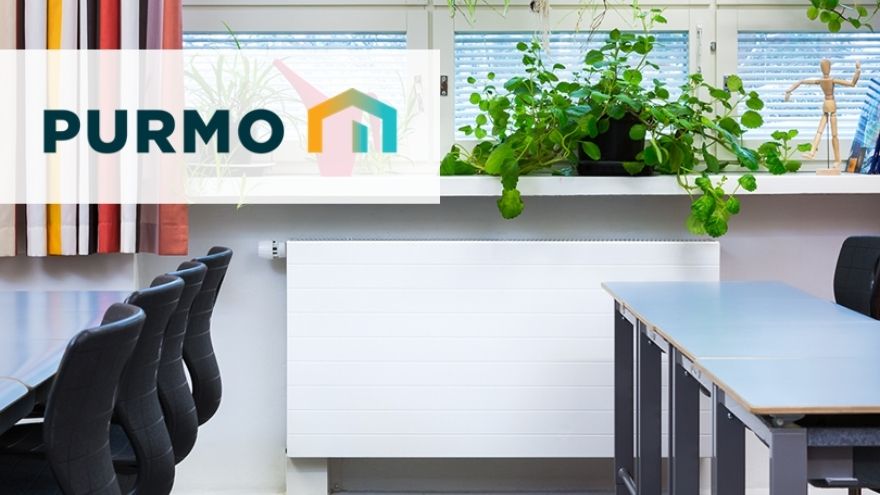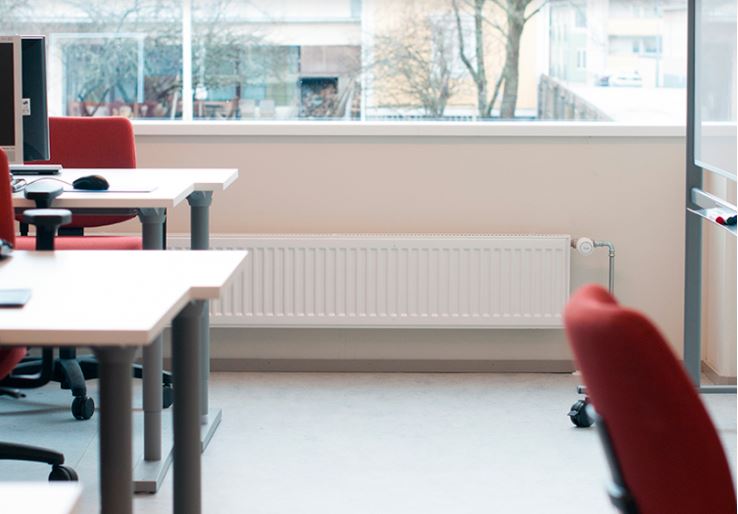Almost all of us have experienced poor quality indoor air and drafts. These problems have a significant impact on the learning process. But why are indoor air problems in the classroom so common, even though high-quality technical solutions are available?

The main reason is the fact that at the design and implementation stage of the project the requirements regarding the proper method of heating , cooling and ventilation of the school are not understood.
Check out Purmo products at the Onninen wholesaler
The school building is very dynamic in terms of heating. Periodic use, empty rooms at night and on weekends, and high and rapidly changing heat loads on weekdays require a quick response from the heating system. School rooms must also be heated quickly and efficiently before students and employees return to them.
Low temperature in classrooms? Choose the Purmo radiator!
Classrooms usually have large windows to take advantage of natural light. During the heating season, the surface of the windows is cooler than the other surfaces in the room, which causes asymmetry of thermal radiation, which students sitting near the window feel uncomfortable. Radiators under the windows compensate for this "cold radiation" and stop the flow of cold air through the window.
Classrooms also pose a cooling challenge. As mentioned above, the heat load caused by students can be up to 3 kW, direct solar radiation from windows on the south facade is up to 400 W per square meter of window (assuming a 10 m2 window in the classroom). Whenever possible, rooms should be ventilated, e.g. during breaks in classes. However, opening windows does not provide sufficient cooling and ventilation during the warm months. In this case, mechanical cooling is required during lessons. The demand for cooling power in the room is very high, up to 200 W per m2 of floor space. For this purpose, the best technical solutions are used.

Set of ventilation radiators
To maintain the carbon dioxide concentration below 1000 ppm, it is necessary to ensure adequate ventilation of rooms by supplying fresh outdoor air to classrooms during classes at a level of at least 4 l/sec. per person. High levels of carbon dioxide impair the ability to concentrate and learn. As fresh air is supplied, the indoor air humidity level in the rooms also increases. Due to the additional moisture that occurs when people breathe and sweat - 30 people produce about 1.5 liters of water vapor per hour - the moisture must be removed by ventilation or dehumidification.
The minimum amount of air in the classroom during classes should usually be above 120 l/sec. Proper ventilation can only be achieved with appropriate mechanical systems. They most often include mechanical supply and exhaust ventilation (two-way ventilation) and mechanical exhaust ventilation (one-way ventilation). If two-way ventilation is not possible, one-way ventilation can be used, and fresh air is supplied through specially designed sets of ventilation radiators. The air is filtered and heated there. They ensure adequate thermal comfort in classrooms.
